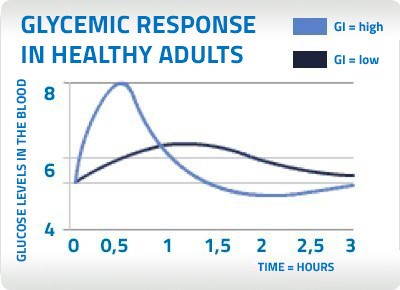The importance of a low glycemic index
WHAT’S THE GLYCEMIC INDEX AND WHY IS IT IMPORTANT TO KEEP IT LOW DURING SOME PHYSIOLOGIC/PATHOLOGIC STATES?
The Glycemic Index (GI), measures how a food containing carbohydrates raises blood glucose levels. Foods with a low Glycemic Index are better assimilated in the body and result in healthier blood sugar and insulin control, disease prevention, increased energy, and improved mood. High glycemic index foods containing cereals rich in starch can cause health issues such as obesity and diabetes, both in humans and animals.

Feeding cats and dogs food that have low glycemic index is important because their metabolism has evolved to gain energy from animal proteins and fats, not carbohydrates. Carbohydrates traditionally found in cat and dog food formulas provide a quick energy burst as postprandial glycemic levels peak which negatively affect insulin and blood sugar controls, provide unwanted calories, and can cause health issues such as obesity and diabetes since their anatomy isn't designed to process them in abundance. Nevertheless, most industrial pet foods on the market contain 40% to 60% cereals which are rich in easily digestible carbohydrates. N&D food lines contain 0% (grain-free) to 20% (low ancestral grain) cereals.
There are physiologic and pathological conditions where a low sugar level is crucial, and that's why we developed low glycemic index formulas with GMO-free ancestral cereals (spelt and oats) such as Obesity, Neutered, Diabetic, and Joint. In these formulas, a low glycemic index is functional to a moderate postprandial glycemic response and modulation over time.
- Obesity, diabetes and blood glucose curve. Comparison of the postprandial glycemic response in cats fed with super premium feed containing traditional cereals, alternative grains or lacking in cereals.
- Control of post-prandial glycemic response in dogs. Comparison of post-prandial glycemic response in dogs fed with super premium feed containing cereals traditional, alternative grains or lacking in cereals.

